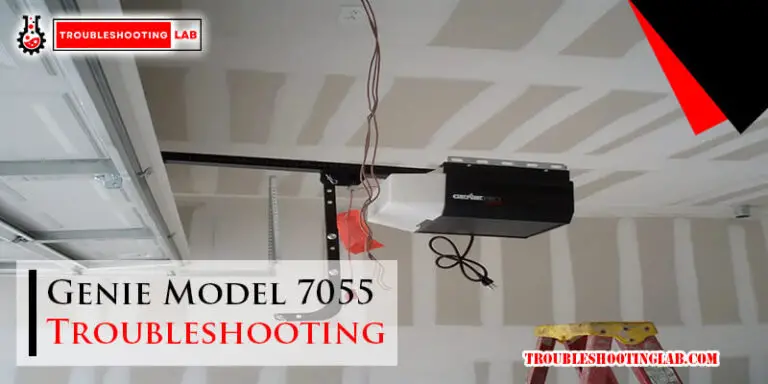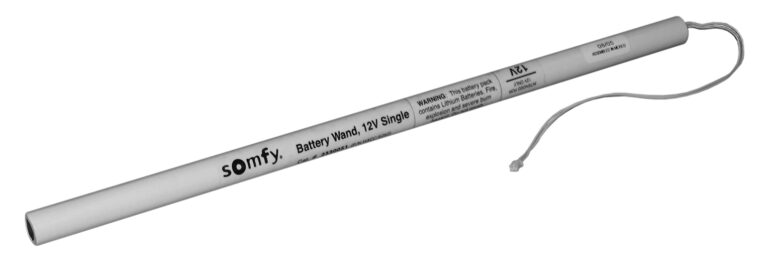Kenmore Series 100 Washer Troubleshooting: Fixing Issues
Kenmore Series 100 Washer Troubleshooting can be done by checking for error codes, testing the thermal fuse for continuity, and ensuring that the lid switch is functioning properly. If the washer is not starting, it could be due to an overheating issue or a blown fuse.
Resetting the motor may also help resolve spinning issues. Additionally, checking for clogs in the waste hose or drain pump can help address draining problems. Top-loading washer troubleshooting tips can also be useful in identifying and resolving any other common problems with the Kenmore Series 100 washer.

Troubleshooting Kenmore Series 100 Washer Issues
Common Problems With Kenmore Series 100 Washer
If you own a Kenmore Series 100 washer, you may encounter some common issues that can disrupt your laundry routine. Understanding these problems can help you troubleshoot and fix them quickly. Here are some common problems you may encounter:
1. Not Starting: One of the most frustrating issues is when your Kenmore Series 100 washer doesn’t start. This can be caused by a blown thermal fuse or a faulty line fuse. To determine if the thermal fuse is the culprit, use a multimeter to test it for continuity. If the fuse doesn’t have continuity, it needs to be replaced.
2. Not Draining: Another common problem is when your washer refuses to drain. This can be caused by a clogged drain hose, a faulty drain pump, or a malfunctioning lid switch. Check the drain hose and remove any clogs if present. If the problem persists, check the drain pump for any obstructions or damage. Additionally, test the lid switch to ensure it is functioning correctly.
3. Not Spinning: If your Kenmore Series 100 washer is not spinning, it could be due to an out-of-balance condition. When the washer detects this condition, the spin light will blink during the remainder of the cycle. Additionally, a flashing Spin LED light indicates an issue with the washer’s balance. To address this problem, try redistributing the load evenly in the washer.
Quick Troubleshooting Steps To Fix The Issues
When you encounter any of the above problems with your Kenmore Series 100 washer, here are some quick troubleshooting steps to help you fix them:
1. Not starting:
– Check for blown thermal fuses or faulty line fuses using a multimeter.
– Replace the fuse if there is no continuity.
2. Not draining:
Inspect the drain hose for clogs. Remove any obstructions if found.
Check the drain pump for any obstructions or damage.
Test the lid switch to ensure it is functioning correctly.
3. Not spinning:
Check for any out-of-balance conditions and redistribute the load.
Ensure that the load is evenly distributed in the washer.
By following these troubleshooting steps, you can quickly address common issues with your Kenmore Series 100 Washer and get back to your laundry routine without any hassles. Remember, if the problem persists or you’re unsure about any repairs, it’s always best to consult a professional technician or refer to the Kenmore washer troubleshooting manual.
Kenmore Series 100 Washer Not Starting
Are you experiencing issues with your Kenmore Series 100 washer not starting? Don’t worry, we’ve got you covered! In this section, we will discuss the reasons why your Kenmore washer might not start and provide troubleshooting steps to help you fix the issue. Let’s dive in!
Reasons Why The Kenmore Series 100 Washer Won’t Start
- Faulty thermal fuse: If your washer overheats, the thermal fuse may blow, causing the washer not to start. Use a multimeter to test the thermal fuse for continuity. If it doesn’t have continuity, it needs to be replaced.
- Blown line fuse: The line fuse is responsible for providing power to the washer. If it blows, the washer won’t start. Check the line fuse using a multimeter and replace it if it’s faulty.
- Power supply issues: Make sure your washer is properly connected to a functional power outlet. Check if the circuit breaker hasn’t tripped and reset it if necessary.
- Door switch problem: The door switch ensures that the washer starts only when the door is securely closed. If the switch is faulty or misaligned, it can prevent the washer from starting. Inspect the door switch and replace it if needed.
- Control board malfunction: A malfunctioning control board can also be the culprit behind your washer not starting. Check for any signs of visible damage or burned components on the control board and consider replacing it if necessary.
Troubleshooting Steps To Fix The Issue
If your Kenmore Series 100 washer is not starting, follow these troubleshooting steps:
- Check the power supply. Ensure that your washer is plugged into a functioning power outlet and that the circuit breaker hasn’t tripped.
- Verify the door switch: inspect the door switch to ensure it’s not damaged or misaligned. Replace the door switch if necessary.
- Test the thermal fuse: Use a multimeter to test the thermal fuse for continuity. If it lacks continuity, replace the thermal fuse.
- Check the line fuse: Test the line fuse using a multimeter. If it’s blown, replace the line fuse to restore power to the washer.
- Inspect the control board. Look for any visible signs of damage or burned components on the control board. If found, consider replacing the control board.
- Contact a professional: If you have tried all the troubleshooting steps mentioned above and your Kenmore Series 100 washer still won’t start, it’s recommended to seek assistance from a professional appliance repair service.
By following these troubleshooting steps, you can identify and resolve the issue causing your Kenmore Series 100 washer not to start. Remember, if you are unsure or uncomfortable with the troubleshooting process, it’s always best to consult a professional for assistance.
Kenmore Series 100 Washer Not Draining
Possible Causes Of The Kenmore Series 100 Washer Not Draining
If your Kenmore Series 100 washer is not draining, there could be a few possible causes. Understanding these causes can help you troubleshoot the issue and resolve it quickly. Here are some common reasons why your Kenmore Series 100 washer may not be draining:
- Blocked or clogged drain hose: Over time, debris and lint can accumulate in the drain hose, leading to a blockage that prevents proper drainage.
- Faulty drain pump: The drain pump is responsible for removing water from the washer drum. If the pump is damaged or malfunctioning, it won’t be able to effectively drain the water.
- Obstructed drain filter: The drain filter can become clogged with lint, small objects, or other debris, obstructing water flow and preventing proper drainage.
- Issues with the lid switch: If the lid switch is faulty or not functioning properly, it can interrupt the draining process and prevent the washer from draining.
- Drain hose placement: Improper placement of the drain hose, such as being too high or too low, can impede proper drainage.
Step-by-step Guide To Troubleshoot And Resolve The Issue
If your Kenmore Series 100 washer is not draining, follow these steps to troubleshoot and resolve the issue:
- Check the drain hose: Firstly, inspect the drain hose for any blockages or kinks. Ensure that the hose is not bent or obstructed in any way.
- Clear the drain hose. If you find any debris or clogs in the drain hose, remove them carefully. A long brush or a pipe cleaner can be used to clear any obstructions.
- Clean the drain filter: Locate the drain filter, usually located near the bottom of the washer’s front panel. Remove the filter and clean it thoroughly, removing any lint or debris.
- Test the drain pump: Listen for any unusual sounds coming from the drain pump. If the pump is making grinding noises or not functioning at all, it may need to be repaired or replaced by a professional technician.
- Check the lid switch. Ensure that the lid switch is working properly by opening and closing the lid. If the switch is loose or doesn’t click when the lid is closed, it may need to be replaced.
- Inspect the drain hose placement: Make sure that the drain hose is positioned correctly, with no kinks or bends. Adjust the height of the hose to ensure proper drainage.
- Test the washer: Run a test cycle to check if the issue is resolved. If the washer is still not draining properly, it may require further inspection or professional assistance.
By following these troubleshooting steps, you can resolve the issue of a Kenmore Series 100 washer not draining. Remember to always refer to the manufacturer’s manual or consult a professional repair technician if you are unsure or if the problem persists.
Kenmore Series 100 Washer Error Codes And Test Modes
Understanding The Error Codes Of The Kenmore Series 100 Washer
If you own a Kenmore Series 100 washer and encounter any issues with it, understanding the error codes is crucial for troubleshooting and fixing the problems. These error codes serve as helpful indicators to pinpoint the specific issue with your washer. By decoding these error codes, you can quickly identify the problem and take the necessary steps to rectify it. This section will explain the most common error codes you may encounter when using a Kenmore Series 100 washer.
How To Enter The Manual Test Mode To Diagnose And Fix Issues
To effectively diagnose and fix issues with your Kenmore Series 100 washer, entering the manual test mode is a valuable tool. This mode allows you to perform various diagnostic tests that help identify problems with specific components of the washer. By following these simple steps, you can enter the manual test mode and get a better understanding of what might be causing the issue:
- Make sure the washer is in standby mode, with no cycle currently running.
- Press and hold the Start/Pause button for three seconds.
- Release the Start/Pause button after three seconds.
- Press the Spin Speed button until “No Spin” is selected. This will activate the manual test mode.
- Once in the manual test mode, you can navigate through different tests by rotating the Cycle Selector Knob.
- Refer to the Kenmore Series 100 washer manual or online resources for a detailed list of test modes and their corresponding functions.
By entering the manual test mode, you can perform tests related to the water inlet, spin cycle, drain pump, motor, and other crucial components. This allows you to narrow down the source of the problem and take appropriate measures to resolve it, whether it’s replacing a faulty part or troubleshooting a specific issue.
Remember to always consult the washer’s manual or reach out to professional technicians for guidance, especially if you are unsure about performing any test or handling any complex issue. This will ensure a proper diagnosis and prevent any further damage to your Kenmore Series 100 washer.
How To Balance A Kenmore Series 100 Washer
A properly balanced washer is essential for smooth operation and to prevent potential issues during your laundry cycles. If your Kenmore Series 100 washer is consistently going out of balance, it’s important to address the issue to avoid further problems.
Steps To Balance A Kenmore Series 100 Washer For Smooth Operation
- Check if the washer is level. Use a level tool to ensure that your Kenmore Series 100 washer is sitting on a level surface. If it’s not, adjust the legs accordingly to achieve balance.
- Inspect the leveling legs: Check the leveling legs on the bottom of the washer to make sure they are all firmly touching the floor. If any leg is not in contact with the floor, adjust it until all legs are firmly grounded.
- Distribute the load evenly. Uneven loads can cause the washer to go out of balance. Make sure you distribute your laundry evenly inside the drum. Avoid overloading the washer with too many clothes at once.
- Tighten the drum: Loose or damaged drum components can contribute to balance issues. Carefully examine the drum for any loose or broken parts and tighten or replace them as necessary.
- Run a test cycle: Once you’ve made the necessary adjustments, run a test cycle with a small load of laundry. Monitor the washer closely to ensure it runs smoothly without any balance issues. If problems persist, repeat the above steps or consider contacting a professional technician for further assistance.
Tips To Prevent The Washer From Going Out Of Balance During Cycles
- Use proper detergent amounts. Excessive detergent or using the wrong type of detergent can cause excess suds, leading to balance issues. Follow the manufacturer’s instructions for the recommended detergent amount.
- Avoid heavy items: Heavy items such as blankets or towels can create an imbalance. Try to wash these items separately or with lighter loads to prevent any potential balance problems.
- Remove shipping materials: When installing a new Kenmore Series 100 washer, make sure to remove any shipping materials, such as shipping bolts or braces, that may have been placed to secure the drum during transportation. These materials can disrupt the balance of the washer if not removed.
- Regularly clean the washer. A buildup of dirt, lint, or debris can affect the balance of the washer. Regularly clean the drum, detergent dispenser, and other parts of the washer to prevent any potential balance issues.
By following these steps and tips, you can ensure that your Kenmore Series 100 washer remains balanced during cycles, allowing for smooth and efficient laundry days.
Frequently Asked Questions
How Do I Run A Diagnostic On My Kenmore Washer?
To run a diagnostic on your Kenmore washer, check if the Spin LED light is flashing. If it is, there might be an out-of-balance condition. Also, make sure the washer’s thermal fuse and line fuse are not blown. If you’re still having issues, you may need to reset the motor or check for clogs in the drain pump.
Why Is My Spin Light Flashing On My Kenmore Series 100 Washer?
The spin light on your Kenmore Series 100 washer is flashing because there is an out-of-balance condition detected. It will blink during the remaining part of the cycle and stay illuminated for a short time after completion.
Why Is My Kenmore Washer Not Starting?
If your Kenmore washer is not starting, there may be a few possible reasons. First, check if the thermal fuse is blown or if the line fuse is damaged. You can use a multimeter to test the thermal fuse for continuity.
If it doesn’t have continuity, replace it. Another potential issue could be a clogged drain pump or waste hose. Ensure that these components are clear of any debris. If these troubleshooting steps don’t resolve the problem, it may be necessary to call for professional repair assistance.
Can You Reset A Kenmore Washing Machine?
Yes, you can reset a Kenmore washing machine. Refer to the “Washer Not Spinning – How to Reset Motor” video on YouTube for easy steps.
How Do I Troubleshoot My Kenmore Series 100 Washer?
– Check the power supply, ensure the lid is closed, and inspect the water hoses for proper connection. – Verify that the selected cycle and settings are appropriate for the load. – Run a diagnostic test to determine any error codes displayed on the control panel.
– Clean the washer drum and lint filter to prevent clogs and improve performance. – If issues persist, consult the user manual or contact Kenmore customer support for further assistance.
Conclusion
Troubleshooting your Kenmore Series 100 washer doesn’t have to be a daunting task. By following the steps outlined in this post and utilizing the resources available, such as error codes and diagnostic tests, you can easily identify and fix common issues.
Remember to check for clogs, ensure proper connections, and test components like the lid switch and drain pump if necessary. With a little patience and know-how, you’ll have your washer up and running smoothly again in no time. Happy washing!





